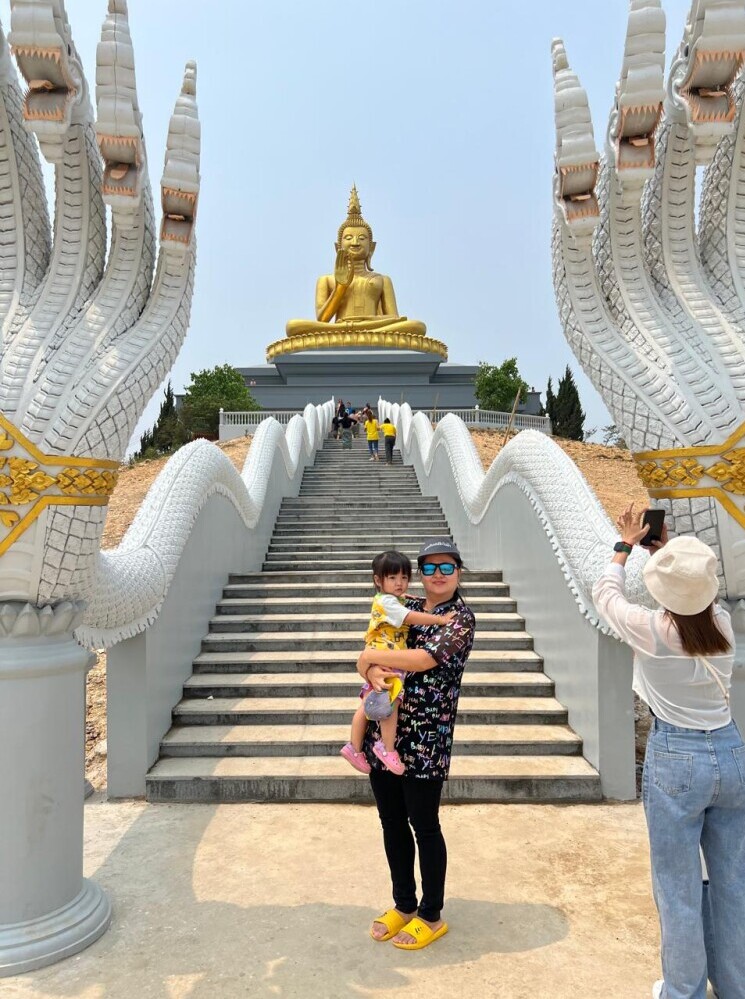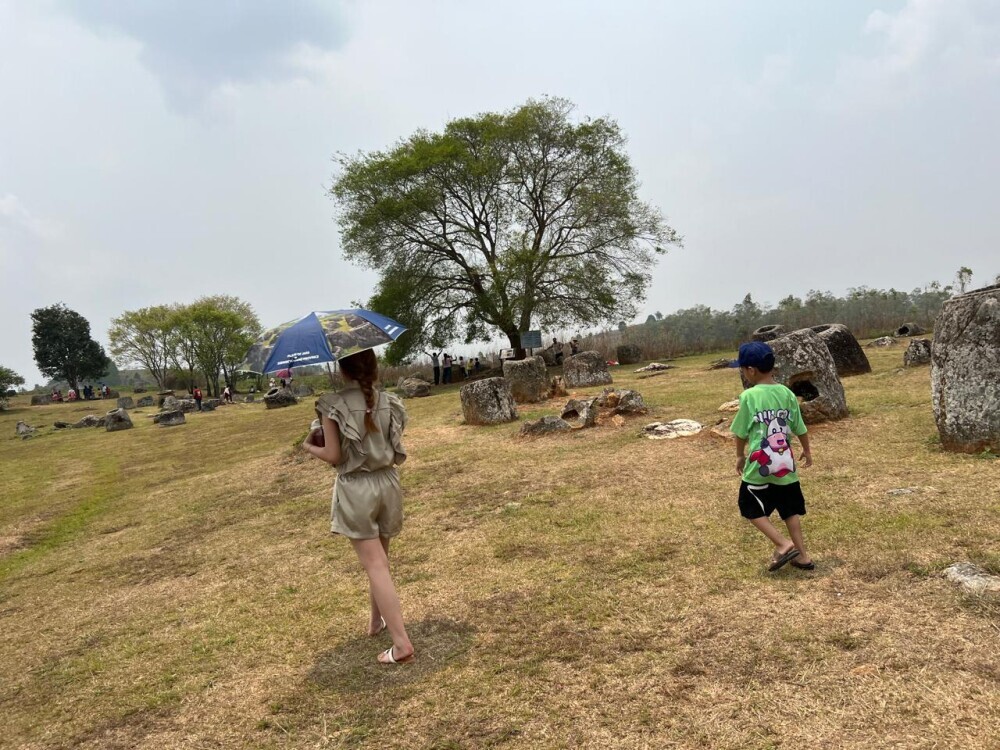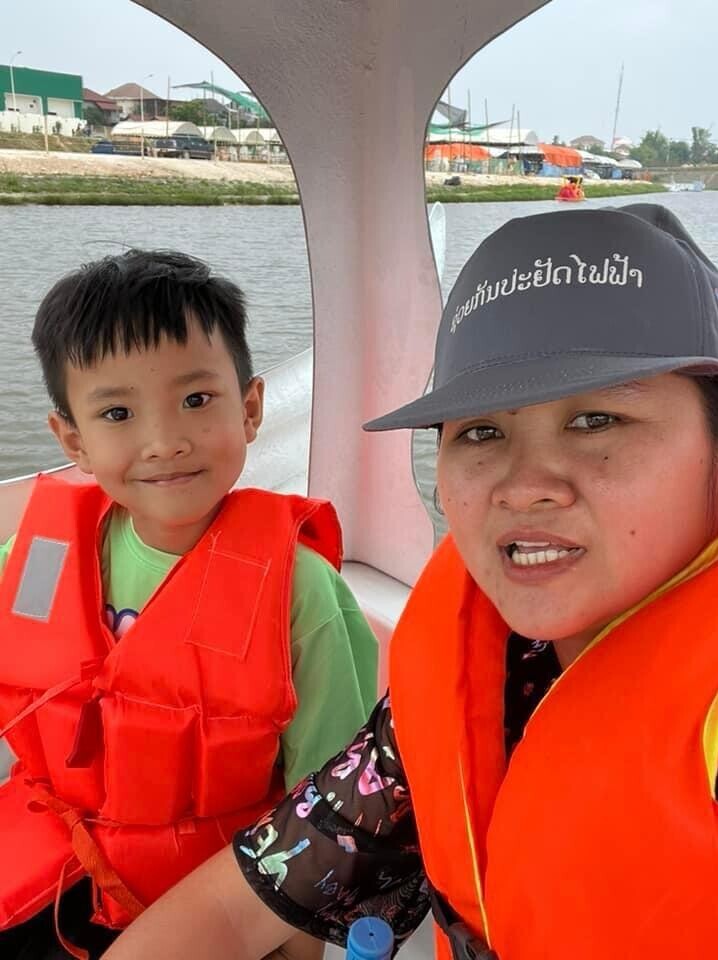Hello everyone or Sabaidee in Lao! I’m excited to share my first blog about XiengKhuang Province, and I’ll be writing this in English to help promote tourism in Laos for expats. Please bear with me if my writing isn’t perfect—English is my second language, but I’m committed to improving my skills!
In this post, I’ll guide you through a one-day adventure in XiengKhuang Province. Imagine you have just one day to explore this beautiful region. What should you see? Where should you go? Don’t worry! I’ll show you the must-visit spots to make the most of your limited time.
Our journey kicks off in Paek District, XiengKhuang Province. We’ll visit the stunning Xiengkhuang View (also known as PhuChang), the serene HaiHin Temple, the fascinating Paint of Jars 1, and finally, the peaceful Ngum River.
Ready to explore? Well, buckle up, because this is going to be an unforgettable trip for you and your family!
Starting Our Journey in Paek District
Our one-day adventure begins with an overnight journey from Vientiane, where we boarded the VIP sleeper bus by Bounmyxay. This comfy bus ride was a great start, setting off at 20:00, and giving us plenty of rest before a day full of exploration. Landing early in the morning in Paek District, the fresh air was the perfect welcome.
To make the most of a single day exploring XiengKhuang, it’s best to plan your itinerary wisely. Today, our stops include the picturesque Xiengkhuang View, the culturally rich HaiHin Temple, the historically significant Paint of Jars 1, and the tranquil Ngum River.
The Paek District is more than just a starting point; it’s a bustling hub with lots of local charm. From the early morning market to the friendly locals, there’s always something interesting to see. Make sure to grab some local snacks as we venture out to our first destination. Trust me, the journey in XiengKhuang starts off strong from Paek District.

Exploring Xiengkhuang View (PhuChang)
Our first stop is the breathtaking Xiengkhuang View, or as locals call it, PhuChang. This spot offers some of the best panoramic views in XiengKhuang Province. Typing ‘Xiengkhuang View’ into Google Maps will guide you right to it. But a word of caution: the road up can be quite steep, so it’s best to use a sturdy pickup truck or a motorcycle if you’re feeling adventurous.
We made it to the base of PhuChang, right by the Xiengkhuang View Hotel. This hotel could be your base if you decide to extend your stay. Their contact numbers are +856-61-213478 and mobile: +856-20 9977 9376. Facilities are great, but we were here for the view! The climb involves a ladder that’s safe but steep. If you’re traveling with kids, keep a close eye on them.
After about a 10-minute climb, we finally reached the top. The view was nothing short of spectacular. Imagine a 360-degree panorama of Paek District, framed by lush mountains and dotted with pine trees. The fresh, cool breeze makes it all even more magical. Plenty of spots here for those perfect Instagram-worthy photos!
We owe a huge thank-you to my niece, Miss Ta, who guided us up the mountain. She made sure the trip was smooth and informative. Every bit of the journey offered something to marvel at. From the local flora to the sweeping views, Xiengkhuang View felt like a breath of fresh air—literally and figuratively.

Visiting HaiHin Temple
Our next stop is the serene HaiHin Temple, nestled in TongMiXai Village, Paek District. This temple is not just a place of worship but a piece of living history. Built to replace the SiAng Temple destroyed during the war years of 1965 to 1970, this site holds great significance for the local community.
The main attraction here is the newly built Buddha stupa, officially named ‘Phachaoyai Ongluangprathanphone.’ Completed in 2023, it stands as the largest Buddha stupa in the northern part of Laos. Local people celebrated its inauguration with a grand ceremony in late February 2023. This towering figure cast in bronze is a wonderful representation of Buddhist culture and a symbol of resilience.
The entrance to the temple is quite eye-catching, flanked by two magnificent white dragons on either side of the staircase. This majestic path leads you to the centerpiece—a giant Buddha statue that radiates peace. There’s also a shrine to the left when viewed from the stupa, adding another layer to your spiritual experience.
HaiHin Temple is an ideal spot for those looking to understand more about Lao culture and Buddhism. The architecture here is stunning, and the spiritual vibe is palpable. Don’t forget to pay your respects and maybe even offer a small donation to support the temple’s upkeep.

Discovering Paint of Jars 1
Our adventure continues at one of XiengKhuang’s most famous sites: Paint of Jars 1. This archaeological mystery is located just a short drive from HaiHin Temple. It’s best known for its enormous stone jars scattered across the landscape, believed to be over 2,000 years old.
The origins and purpose of these jars are still debated by historians. Some say they were used for fermentation, while others believe they were ancient burial sites. Walking amongst these massive jars, you can feel the weight of history under your feet. It’s both fascinating and a bit eerie.
Make sure to wear comfortable shoes, as the site involves a fair amount of walking. There’s also a visitor center at the entrance where you can learn more about the history and theories surrounding these jars. Guides are available, and they offer valuable insights that you won’t find just wandering around on your own.
This site offers plenty of photo opportunities, making it a great spot for those looking to capture some unique and historical shots. Be prepared for a mix of emotions—wonder, curiosity, and a bit of bewilderment—as you try to wrap your head around these ancient artifacts.
If you’re a history buff or just love mysteries, Paint of Jars 1 should be at the top of your list. It was definitely one of the highlights of our trip, offering a deep dive into the ancient history that continues to puzzle even the experts today.

Enjoying the Ngum River
Our final destination is the peaceful Ngum River, located at the foot of PhuChang in NamNgum Village, Paek District. This small river offers a tranquil escape and a chance to unwind after a day full of adventures.
The river is perfect for a relaxing family picnic. We spread out a blanket by the riverbank and enjoyed a simple meal while taking in the stunning natural surroundings. You can also dip your toes in the cool water or even take a swim if you’re up for it. Just be sure to stay safe and watch any little ones closely.
Local kids were fishing nearby, and it was quite a sight to see their enthusiasm and skill. We even tried our hand at fishing with a bit of help from the locals, adding a fun, interactive element to our visit.
The Ngum River plays an essential role in the lives of local communities, serving as a source of water and sustenance. It’s a great place to observe daily life in Laos. You get a real sense of connection to the land and the people.
Taking a moment here to breathe in the fresh air and listen to the gentle flow of the river was the perfect end to our day’s adventure. It’s these simple yet profound experiences that make travel so rewarding.
Reflecting on an Unforgettable Day
Wrapping up our whirlwind day in XiengKhuang Province, I can’t help but feel grateful for the experience. Starting from the early morning in Paek District to the breathtaking views at the top of PhuChang and the deep historical insights at HaiHin Temple and Paint of Jars 1, every moment was packed with wonder and learning.
The highlight, though, was undoubtedly the serenity of the Ngum River. It provided a much-needed breather and perfectly balanced out the hustle and bustle of the day’s activities. Each of these spots offers something unique, making XiengKhuang Province a must-visit for anyone with a day to spare in Laos.
For those planning a similar one-day trip, I’d advise an early start and comfortable walking shoes. Be ready for a mix of historical exploration and natural beauty and take your time to soak it all in. Whether you’re with family or on a solo adventure, this trip has something for everyone.
To my niece, Miss Ta, who guided us flawlessly, and to the friendly locals who shared their stories and smiles, a heartfelt thank you. This journey not only enriched my understanding of Lao culture but also deepened my appreciation for its history and natural beauty.
I hope this guide inspires you to visit XiengKhuang Province and make your own unforgettable memories. Stay tuned for more travel adventures, and feel free to share your own experiences if you decide to visit!
